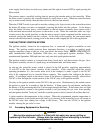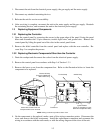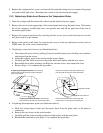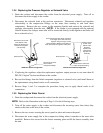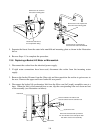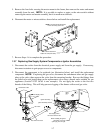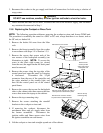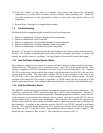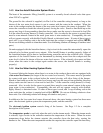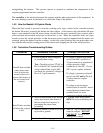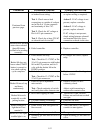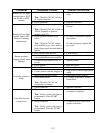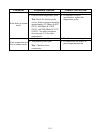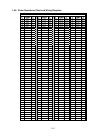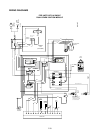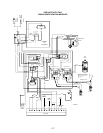1-10
1.4.3 How the Autofill/Autoskim System Works
The heart of the automatic filling (Autofill) system is a normally closed solenoid valve that opens
when 24VAC is applied.
The ground for the solenoid is supplied (via Pin 6 of the controller wiring harness) so long as the
shorter of the two water-level sensors is not in contact with the water in the cookpot. When the
water in the cookpot reaches the shorter of the two water-level sensors, the sensor is grounded. This
causes the controller to break the solenoid ground, closing the valve. Starch or lime build-up on the
sensor may keep it from grounding, therefore always make sure the sensor is clean and its lead (Pin
9 of the controller wiring harness) is firmly connected. Also, in order for the sensor to ground, there
must be some mineral content in the water (pure water is non-conductive). Consequently, the unit
will not operate correctly with distilled, highly filtered, or deionized water. If water of these types is
used, add ⅛-cup of baking soda to the water each time the cookpot is emptied and refilled. NOTE:
Do not use deliming solution to clean these units. Use of deliming solution will damage all stainless steel
parts.)
On units equipped with the Autoskim feature, a logic circuit in the controller automatically opens the
solenoid valve for three seconds every minute. If the Autofill feature is working properly, failure of
the Autoskim feature will be due to a malfunctioning controller and not the solenoid valve. (Proper
operation of the Autofill feature can be determined by draining water from the cookpot until the
water level is below the shorter of the two water-level sensors. If the solenoid valve opens and then
closes when the water in the cookpot again reaches the sensor, the Autofill feature is working
properly.)
1.4.4 How the Water Heating System Works
To prevent lighting the burners when there is no water in the cookpot, these units are equipped with
a low-water-level sensor (the longer of the two water-level sensors). This sensor must be grounded
by contact with water in the cookpot before the control circuitry will allow firing of the burners.
Starch or lime build-up on the low-water-level sensor may keep the sensor from grounding, therefore
always make sure the sensor is clean and its lead (Pin 7 of the controller wiring harness) is firmly
connected. Also, in order for the sensor to ground, there must be some mineral content in the water
(pure water is non-conductive). Consequently, the unit will not operate correctly with distilled,
highly filtered, or deionized water. If water of these types is used, add ⅛-cup of baking soda to the
water each time the cookpot is emptied and refilled. NOTE: Do not use deliming solution to clean
these units. Use of deliming solution will damage all stainless steel parts.)
In addition to the low-water-level sensor discussed above, the water heating system has three more
parts: the electronic ignition system, the temperature probe, and the controller.
The electronic ignition system controls firing of the burners. See Page 1-2 for a complete
description of this system.
The temperature probe is used only when the unit is in the simmer mode. When the simmer mode
is selected, logic circuits in the controller monitor the temperature of the water. When the water
temperature drops below the simmer setpoint, the controller closes the heat relay, causing the
burners to fire. When the water temperature reaches the setpoint, the controller opens the heat relay,



